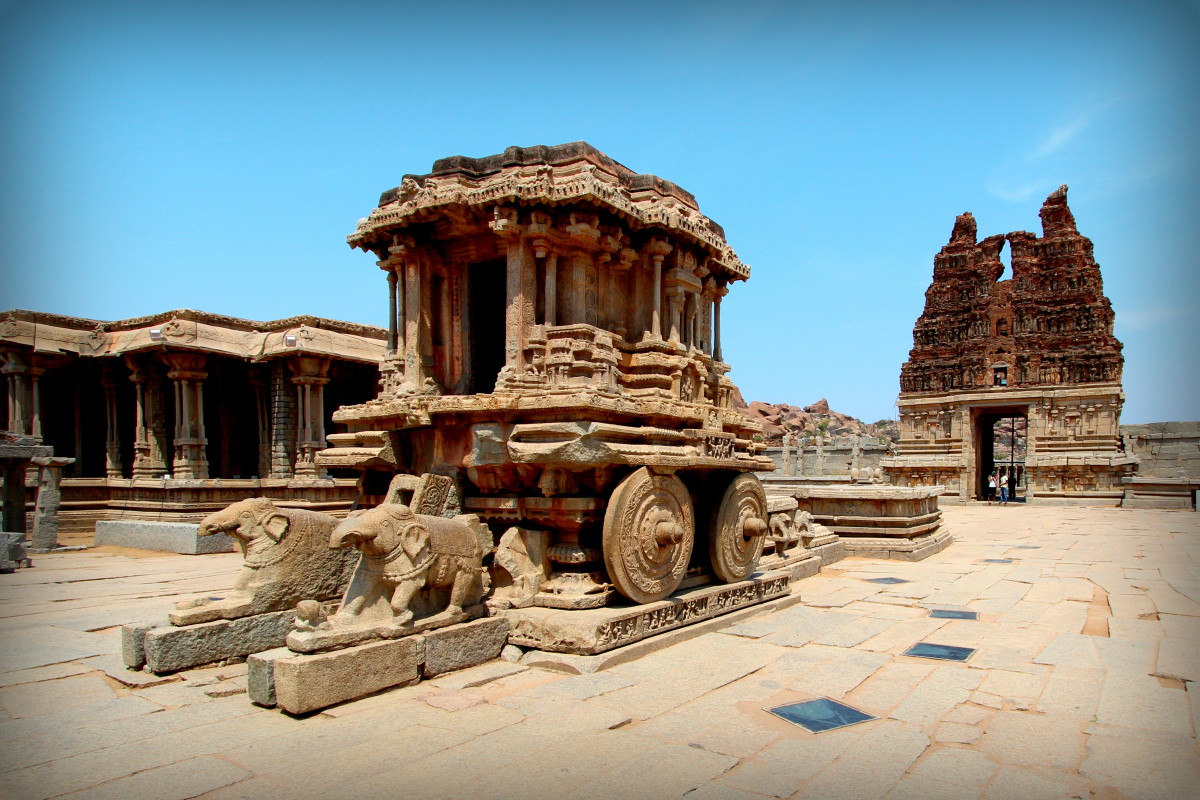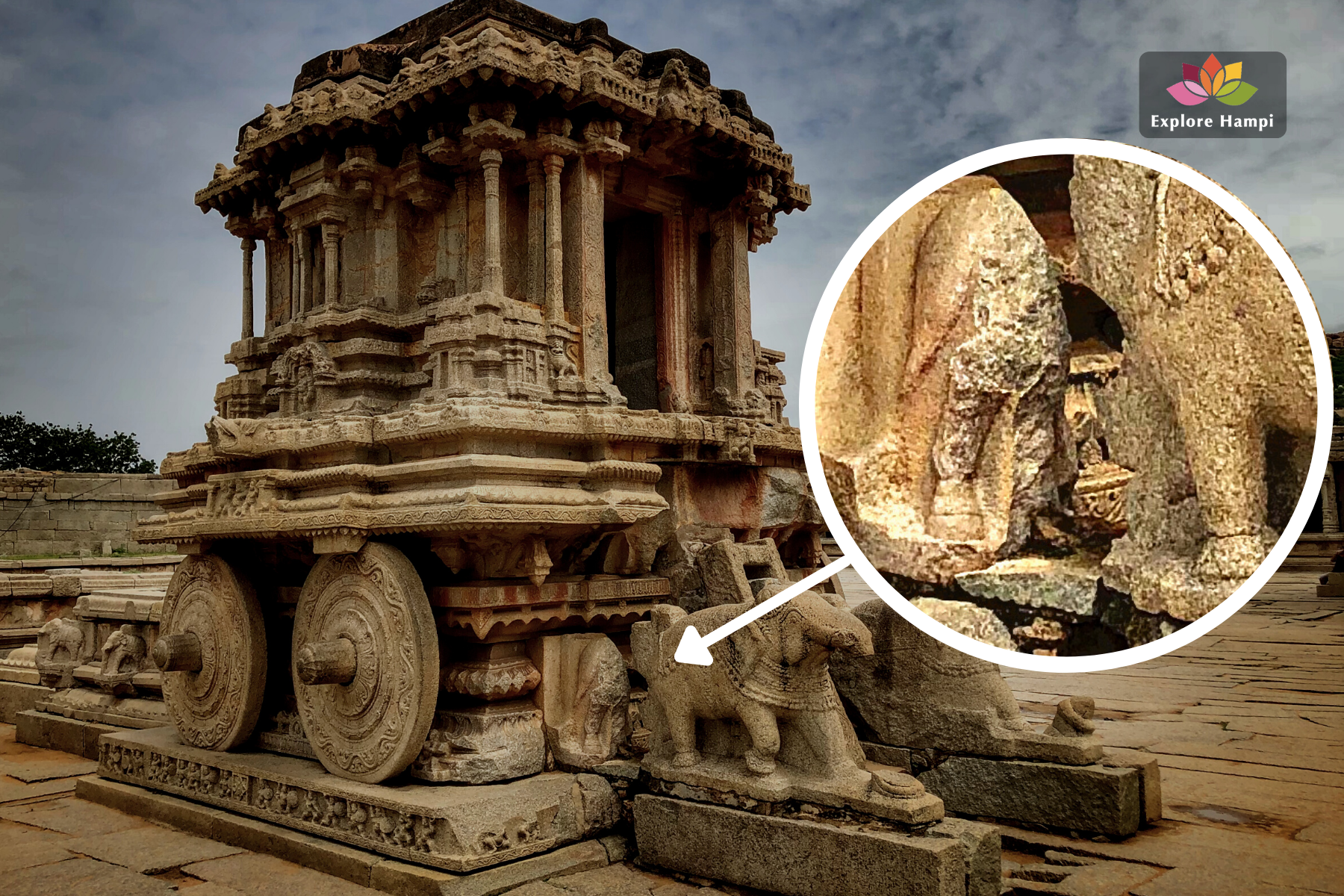In early 1520 CE, Krishnadevaraya commissioned the stone chariot on his return from the successful campaigns of Orissa. Today, the stone chariot is amongst the most iconic heritage structures of India. So much so that when the government of India decided to issue new currency notes in 2017, they used the motif of the stone chariot on the 50 rupee currency note.
Wooden chariots (Rathas in Kannada) are drawn through the main streets of several south Indian temple towns as part of the procession during festivals. This tradition reached its peak during the reign of Vijayanagara, this capital city hosted grand rathotsavas (Chariot festivals) at each of its major temples. The building of stone chariot immortalized this long-cherished tradition of Karnataka. The stone chariot originally carried an idol of Garuda, the Vahana (Vehicle) of Vittala, who is the main presiding deity of this temple.

This is a recently captured photograph of the Stone chariot inside the Vittala Temple complex. In design & style, it closely follows the main shrine and its ranga mantapa. Each of the four wheels is a monolith and is free to rotate on its axle free from the rest of the structure. A common misconception is that the entire structure is a monolith and carved out of a single stone. It is in fact a very complex stack of interlocking blocks that make up the chariot.
To the front, facing the main shrine, we can see the chariot appears to be drawn by two elephants. On the top, the surviving structure appears to be flat.

This image was captured by Andrew Charles Brisbane Neill in 1856 CE and gives us the earliest picture ever taken of the Stone Chariot.
On closer look, one can notice that there was a pyramidal structure made of brick & mortar in the typical Dravidian style, we can call this a vimana. It has three talas(rows) with alternating Shaala & Kuta shrine aedicules. The elephants that we see today on the front side, are missing in this picture. This can only mean that the elephants that are present today were placed there sometime after 1856 CE.

On more careful examination of the front side (side facing the main shrine), we can see that the elephants are detached from the main structure. And that the part still attached to the structure seems to have carvings of the hind legs & tail of a horse. The original structure was driven by a pair of horses instead of elephants. This makes sense because, in 16th century Vijayanagara, horses were central to all ceremonial rituals related to the King & Royal family. The stone chariot was a symbol of Krishnadevaraya’s patronage and offering to Vittala, thus the use of horses is appropriate. Horses were central to the success of Vijayanagara military campaigns, and they celebrated this by showing off their horses any opportunity they got. The elephants were placed here sometime in the 20th century, perhaps by someone with good intentions but poor knowledge of the context.
Book a heritage tour with us at Hampi and hear more stories like this. An immersive experience of Hampi that covers all the monuments within Hampi’s UNESCO world heritage site.